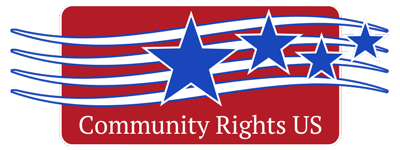A Blog Posting by Lindsey Schromen-Wawrin of the Community Environmental Legal Defense Fund, from November 12, 2016.
In the United States, we put a lot of faith in the theory of “checks and balances” of government power. The theory goes that, since power corrupts, it is best to not give absolute power to any one government official or branch of government. In legal academic jargon, this “separation of powers” is integral in the theory of “federalism.” We talk about two kinds of “federalism” – “horizontal federalism” and “vertical federalism.”
Horizontal federalism is the separation of powers we’re taught about in grade school: the separation of legislative, executive, and judicial powers into three different branches of government. In theory, the legislative branch makes the laws, the executive branch enforces the laws, and the judicial branch interprets the laws. For the federal government of the United States, Congress is the legislative branch, the President is the executive branch, and the United States Supreme Court (and the other federal courts) is the judicial branch. The theory of separation of powers holds that because no person can control more than one of these three governmental powers, the other two branches of government can “check” or “balance” the unjust or corrupt exercise of power by one person or one branch of government.
In theory, an out-of-control President can only enforce the laws that Congress enacts, and only enforce them as the Supreme Court has said they can be enforced. On the other hand, an out-of-control Congress can enact whatever laws it wants, but the President could choose not to enforce them. The Court, as referee, gets the final say on whether any branch of government (including itself, hmmm) is abusing its power and infringing on the principle of separation of powers. All of this is, again, in theory, tempered by the bounds of power set forth by the United States Constitution, which “constitutes” the bounds of power that each branch of the federal government can wield.
This brings us to reflect on how well this system of checks and balances will hold up in the next couple years. President-elect Trump has threatened to use his position without restraint, without concern for the limits of the federal executive power. To be fair, he isn’t starting a new trend here. Since 2001, both President Bush and President Obama have expanded the federal executive power, without much “check” by either Congress or the Courts. Trump will take office with a Congress controlled by his own political party. Different people will fill the executive and legislative branches, but their ideology and agenda will be very similar. Further, there is already one vacancy for Trump to fill on the United States Supreme Court. It’s not really an overstatement to say that President Trump – or at least, his political ideology – will control all three branches of the federal government. So much for separation of powers. …
To read the entire Blog, click HERE.
